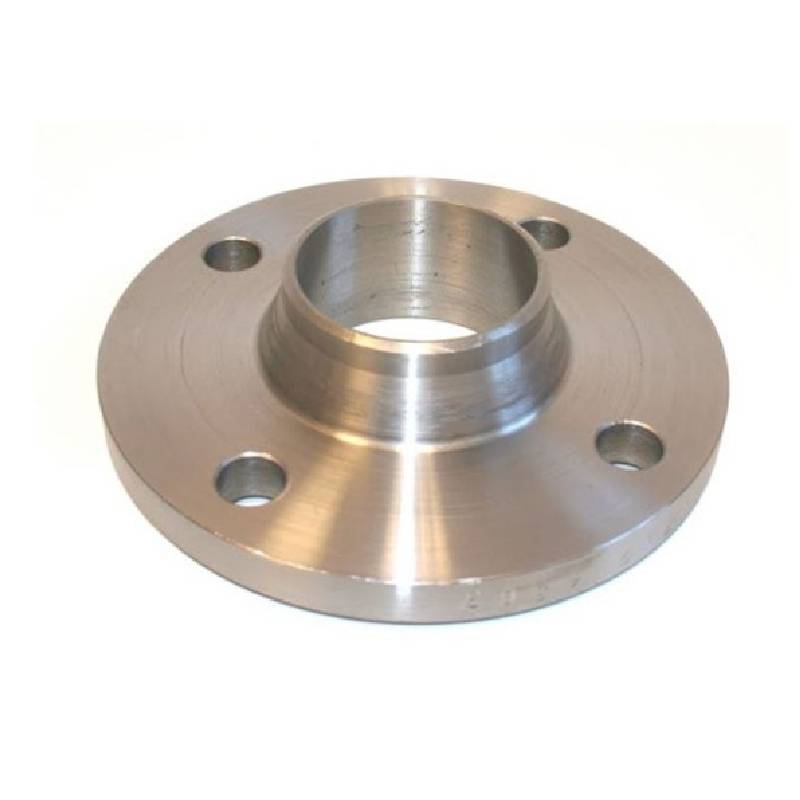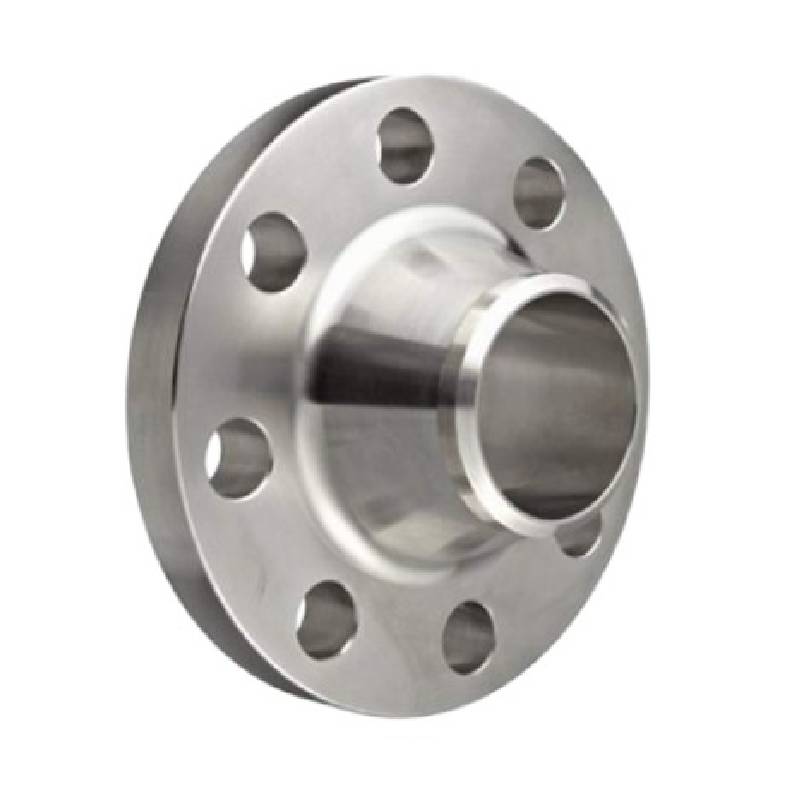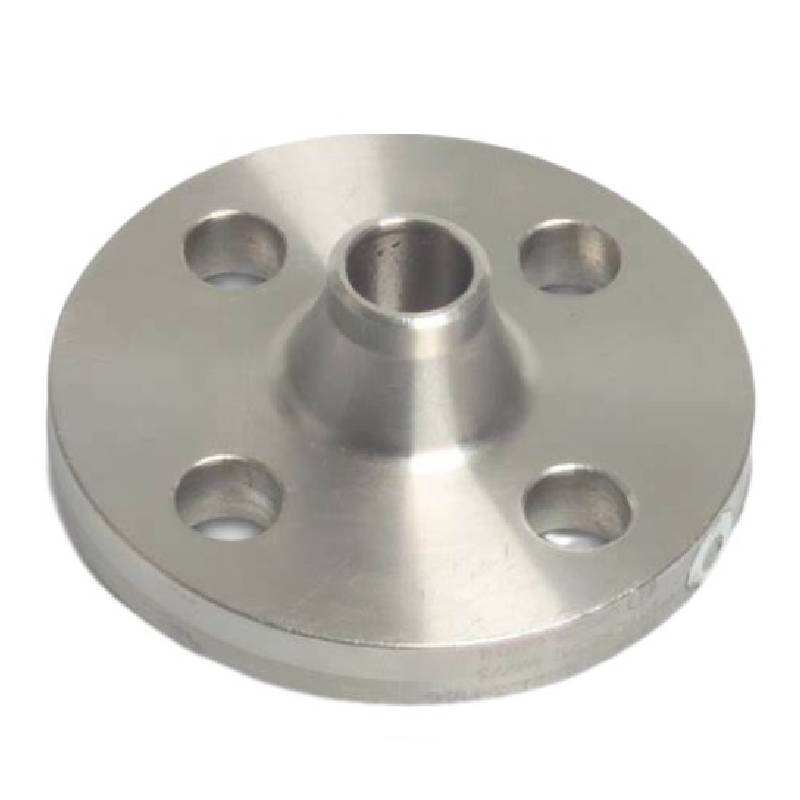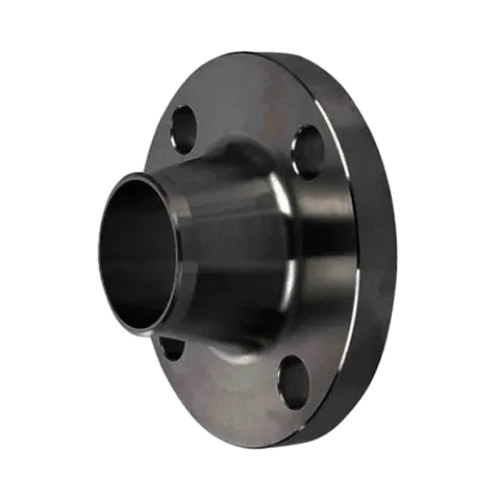-
Cangzhou Yulong Steel Co., Ltd.
-
Phone:
+86 13303177267 -
Email:
admin@ylsteelfittings.com

Aug . 26, 2025 00:40 Back to list
DIN 86037 Flange & DIN 86044 Pipe Flanges - High-Quality PN10/PN16
Introduction to DIN Standard Flanges in Industrial Applications
In the demanding landscape of industrial piping systems, the integrity and reliability of connections are paramount. Flanges, as critical components, play a pivotal role in ensuring leak-proof and robust unions between pipes, valves, pumps, and other equipment. Among the various international standards, the Deutsches Institut für Normung (DIN) standards are widely adopted, particularly across Europe and in sectors requiring stringent engineering specifications. These standards provide a comprehensive framework for flange design, dimensions, materials, and testing, guaranteeing interoperability and performance.
This article delves into the technical intricacies and industrial significance of the din 86037 flange, a specific type within the DIN framework, and explores its counterparts like the din 86044 flange, as well as general din pipe flanges such as din flange pn10 and din flange pn16. We will cover the manufacturing process, technical specifications, diverse application scenarios, and key advantages that position these flanges as indispensable in critical infrastructure projects. The discussion will also encompass customization options, vendor considerations, and real-world application case studies to provide a holistic understanding for B2B decision-makers and engineering professionals. Adherence to DIN standards ensures not only dimensional accuracy but also material integrity and pressure ratings suitable for severe operational environments.
Detailed Manufacturing Process of DIN 86037 Flanges
The production of high-quality flanges, such as the din 86037 flange, involves a meticulously controlled multi-stage process, ensuring compliance with rigorous DIN standards and optimal performance in industrial applications. This process prioritizes material integrity, dimensional precision, and structural strength.
1. Material Selection & Preparation
Materials are chosen based on the intended application, pressure, temperature, and corrosive environment. Common materials include carbon steels (e.g., P250GH, C22.8), stainless steels (e.g., 1.4404, 1.4541), and alloy steels. Raw materials arrive as billets or bar stock, undergoing initial quality checks for chemical composition and mechanical properties.
2. Forging or Casting
- Forging: This preferred method for high-pressure and high-temperature applications involves heating the metal to a plastic state and shaping it using hammers or presses. Forging aligns the grain structure, enhancing strength and toughness, crucial for robust din pipe flanges.
- Casting: For larger, complex shapes or lower pressure applications, molten metal is poured into molds. While cost-effective, cast flanges may exhibit lower strength due to potential internal porosity.
3. Heat Treatment
Post-forging or casting, heat treatment processes such as normalizing, annealing, or quenching and tempering are applied. These processes optimize the microstructure, relieve internal stresses, and improve mechanical properties like hardness, ductility, and impact strength, vital for the longevity of din nd10 flange.
4. CNC Machining
Precision machining using Computer Numerical Control (CNC) lathes and milling machines is crucial to achieve the exact dimensions, face finishes, and bolt hole patterns specified by DIN standards (e.g., EN 1092-1). This stage creates the precise sealing surfaces and ensures perfect alignment.
5. Surface Finishing & Coating
Flanges may undergo surface treatments like galvanizing, anti-corrosion painting, or phosphating to enhance resistance to rust and environmental degradation. This significantly extends the service life, especially in harsh environments.
6. Inspection & Testing
Rigorous testing ensures product integrity and adherence to standards like ISO 9001 and specific DIN requirements. This includes:
- Dimensional Inspection: Verification of OD, ID, thickness, bolt circle diameter, and bore using calibrated instruments.
- Material Composition Analysis: Spectrographic analysis to confirm chemical composition.
- Mechanical Testing: Tensile strength, yield strength, impact strength (Charpy V-notch), and hardness tests.
- Non-Destructive Examination (NDE): Ultrasonic testing, magnetic particle inspection, liquid penetrant testing to detect internal flaws.
- Pressure Testing: Hydrostatic or pneumatic tests to confirm leak-tightness.
7. Marking & Packaging
Each flange is marked with essential information: manufacturer's name, material grade, pressure rating (e.g., din flange pn16), and heat number. Products are then carefully packaged to prevent damage during transit, often with protective coatings or covers for sealing surfaces.

This meticulous process ensures that flanges like the din 86037 flange offer exceptional service life, typically exceeding 20-30 years in non-corrosive environments when properly installed and maintained. Target industries include petrochemical, oil & gas, power generation, metallurgy, water supply & drainage, and chemical processing, where energy saving through leak reduction and superior corrosion resistance are critical advantages.
Technical Specifications and Parameters
Understanding the technical specifications of din pipe flanges is crucial for proper selection and system design. DIN standards provide detailed dimensions, material grades, and pressure-temperature ratings. The din 86037 flange, like other DIN flanges, is characterized by its nominal pressure (PN) and nominal diameter (DN).
| Parameter | DIN 86037 (Slip-On/Weld Neck) | DIN 86044 (Blind Flange) | Common Material Grades |
|---|---|---|---|
| Nominal Pressure (PN) | PN 6, PN 10, PN 16, PN 25, PN 40 | PN 6, PN 10, PN 16, PN 25, PN 40 | Carbon Steel: P250GH, C22.8, A105 |
| Nominal Diameter (DN) | DN 10 to DN 1200+ | DN 10 to DN 1200+ | Stainless Steel: 1.4301, 1.4404 (304/304L, 316/316L) |
| Flange Face Type | Raised Face (RF), Flat Face (FF) | Raised Face (RF), Flat Face (FF) | Alloy Steel: 16Mo3, 13CrMo4-5 |
| Manufacturing Standard | DIN EN 1092-1 Type 33 (Slip-On), Type 11 (Weld Neck) | DIN EN 1092-1 Type 05 | Other: Duplex, Super Duplex |
| Typical Application | General piping, vessel connections, din slip on flange for specific uses. | Sealing ends of pipelines, pressure vessel openings | Dependent on service conditions (temp, pressure, corrosion) |
Another notable standard for specialized applications is the flange din 11864 2, specifically designed for hygienic process connections in the pharmaceutical and food & beverage industries, highlighting the breadth of DIN flange applications beyond general industrial use. Understanding these distinctions is critical for engineers and procurement specialists to ensure system integrity and compliance.

Application Scenarios and Technical Advantages
The robust design and standardized manufacturing of the din 86037 flange and related DIN flanges make them suitable for a vast array of demanding industrial application scenarios. Their technical advantages contribute significantly to operational efficiency, safety, and system longevity.
Diverse Application Scenarios:
- Petrochemical and Oil & Gas: Employed in pipelines for crude oil, natural gas, refined products, and chemical feedstocks, where high pressure, corrosive media, and extreme temperatures are common. Flanges like din flange pn16 are essential for secure connections.
- Power Generation: Used in steam lines, cooling water systems, and fuel supply lines within thermal, nuclear, and hydroelectric power plants, demanding reliability under fluctuating loads.
- Water Supply and Wastewater Treatment: Critical for large-diameter pipelines, pumping stations, and treatment facilities, ensuring leak-free transport of water and effluent. The robust design of din nd10 flange is particularly suited here.
- Chemical Processing: Handling aggressive chemicals requires flanges made from specialized materials (e.g., stainless steel, alloy steel) to resist corrosion and maintain process integrity.
- Shipbuilding and Marine Applications: Saltwater environments and confined spaces necessitate compact, durable, and highly corrosion-resistant flanges for onboard piping systems.
- HVAC and Refrigeration: For systems requiring reliable fluid transfer under various pressures and temperatures, preventing refrigerant leaks and maintaining system efficiency.
Key Technical Advantages:
- Superior Pressure Containment: Engineered to specific pressure nominals (PN), these flanges provide excellent sealing capabilities under high-pressure conditions, preventing catastrophic failures.
- Corrosion Resistance: Available in a wide range of materials, including various grades of stainless steel and corrosion-resistant alloys, ensuring extended service life in aggressive chemical environments.
- Enhanced Leak Prevention: Precision machining of flange faces and strict adherence to dimensional tolerances facilitate tight, reliable gasket seals, reducing fluid loss and environmental contamination.
- Standardization and Interoperability: Adherence to DIN standards ensures that flanges from different manufacturers are compatible, simplifying procurement, installation, and maintenance across international projects.
- Ease of Installation and Maintenance: Flanged connections allow for easy assembly and disassembly, simplifying inspection, repair, or replacement of pipeline components without the need for welding. This offers significant energy saving advantages during maintenance outages.
- High-Temperature Performance: Specific material grades and designs are capable of maintaining structural integrity and sealing effectiveness at elevated temperatures encountered in many industrial processes.
- Durability and Longevity: Manufactured through processes like forging and subject to stringent quality control, these flanges are built to withstand the rigors of industrial operations for decades.

Vendor Comparison and Customized Solutions
Selecting the right vendor for industrial flanges, including the din 86037 flange, is a critical decision that impacts project timelines, operational reliability, and overall cost-efficiency. B2B buyers must evaluate vendors based on a comprehensive set of criteria that go beyond mere price.
Key Factors for Vendor Comparison:
- Quality Certifications and Compliance: A reputable vendor will possess ISO 9001 certification and ensure products comply with relevant DIN EN 1092-1, PED (Pressure Equipment Directive), and other industry-specific standards. Material traceability from raw material to finished product is non-negotiable.
- Manufacturing Capabilities: Assess whether the vendor utilizes advanced forging (preferred for strength) and CNC machining processes. The ability to produce a wide range of DIN flange types (e.g., din slip on flange, weld neck, blind flanges) and pressure ratings (e.g., din flange pn10, din flange pn16) indicates broad expertise.
- Experience and Expertise: Vendors with decades of experience in the flange manufacturing sector often possess deep technical knowledge, crucial for problem-solving and offering informed recommendations.
- Testing and Quality Control: Inquire about their in-house testing facilities (mechanical, chemical, NDE) and their quality assurance protocols, including third-party inspection capabilities.
- Lead Time and Supply Chain Reliability: For project-critical components, reliable lead times and a robust supply chain are paramount to avoid costly delays.
- Customer Support and After-Sales Service: Responsive technical support, clear warranty policies, and readily available assistance post-purchase are indicators of a trustworthy partner.
Customized Solutions: Tailoring Flanges to Specific Needs
While DIN standards provide excellent guidelines, many industrial projects require specific adaptations beyond standard catalog offerings. Leading manufacturers offer customized solutions to meet unique operational demands.
- Special Materials: Beyond standard carbon and stainless steels, customization can include exotic alloys like Duplex, Super Duplex, or Nickel alloys for extreme corrosion, temperature, or pressure resistance.
- Non-Standard Dimensions: Projects may require flanges with non-standard diameters, thicknesses, or bolt hole configurations to interface with existing equipment or specialized piping.
- Specific Face Finishes: Custom surface finishes (e.g., spiral serrated, smooth, phonographic) are available to optimize sealing performance with particular gasket types or media.
- Special Coatings and Linings: For highly aggressive media or abrasive applications, specialized internal linings (e.g., PTFE, rubber) or external coatings (e.g., epoxy, ceramic) can be applied to enhance protection and extend service life.
- Integrated Components: Customization can extend to integrating additional features such as taps for instrumentation, lifting lugs, or unique marking requirements.
Engaging with a vendor capable of providing comprehensive engineering and manufacturing support for customized din pipe flanges ensures that specific project requirements are met with precision and reliability, avoiding costly design compromises or operational inefficiencies down the line.
Application Case Studies
The practical deployment of din pipe flanges across various industries consistently demonstrates their reliability and critical contribution to infrastructure integrity. These case studies highlight real-world applications and the benefits derived from using DIN standard components.
Case Study 1: Large-Scale Water Treatment Plant Upgrade
A major municipal water treatment facility in Germany undertook a significant upgrade of its raw water intake and distribution network. The project involved replacing aging infrastructure and installing new pumping stations. Given the high flow rates and continuous operation, reliable, leak-proof connections were paramount. Over 2,000 units of din flange pn10 and din flange pn16 flanges, primarily of the din 86037 flange (welding neck and slip-on) and din 86044 flange (blind) types, were utilized. The consistent quality and precise dimensions of these DIN flanges ensured rapid installation and seamless integration with existing and new pipelines. Post-commissioning hydrostatic testing confirmed zero leakages, contributing to operational efficiency and substantial water loss prevention, ultimately leading to significant energy saving due to reduced pump strain.
Case Study 2: Chemical Processing Plant Expansion
An international chemical company expanded its production facility in the Netherlands, focusing on synthesizing aggressive organic compounds. The new process lines required flanges capable of withstanding corrosive media and elevated temperatures. The project specified stainless steel (1.4404 / 316L) din pipe flanges, including numerous din 86037 flange and specialized flange din 11864 2 for hygienic sections. The selected vendor provided flanges with full material traceability and certification to EN 10204 Type 3.1. The robust corrosion resistance of the chosen materials and the precise face finishes of the DIN flanges were critical in preventing chemical leaks, safeguarding personnel, and ensuring product purity, demonstrating superior corrosion resistance and long-term reliability.
Case Study 3: Offshore Oil Platform Module Fabrication
A fabrication yard constructing modules for a new offshore oil platform in the North Sea required high-pressure flanges for critical process lines. The harsh marine environment and extreme operational pressures demanded components with exceptional mechanical properties and fatigue resistance. Forged carbon steel din nd10 flange and din 86037 flange (weld neck type) rated up to PN40 were selected. The vendor's adherence to stringent NDE (Non-Destructive Examination) protocols, including ultrasonic and magnetic particle testing, ensured the integrity of every flange. This meticulous quality control was vital for meeting the project's demanding safety and reliability standards, minimizing the risk of offshore leaks and associated environmental hazards.

These case studies underscore the pivotal role of professionally manufactured DIN flanges in ensuring the safety, efficiency, and longevity of complex industrial systems across diverse sectors.
Frequently Asked Questions (FAQ)
Q1: What is the primary difference between DIN and ANSI flanges?
A1: DIN (Deutsches Institut für Normung) and ANSI (American National Standards Institute, now largely supplanted by ASME) are both standards for flanges. The primary difference lies in their dimensional standards, pressure ratings (DIN uses PN for "Nominal Pressure" in bar, ANSI uses classes like Class 150, 300, etc. in psi), and bolt hole patterns. DIN is prevalent in Europe and many international markets, while ANSI/ASME is dominant in North America. These standards are generally not interchangeable.
Q2: How do I select the correct material for my din 86037 flange?
A2: Material selection depends critically on the process fluid (corrosivity), operating temperature, and pressure. Common materials include carbon steel (e.g., P250GH) for general applications, stainless steel (e.g., 1.4404 / 316L) for corrosive environments, and alloy steels (e.g., 16Mo3) for high-temperature service. Consulting with a materials engineer or flange supplier is highly recommended.
Q3: What does "PN" mean in din flange pn16?
A3: PN stands for "Pressure Nominal" (or nominal pressure) and is a rating system used in DIN and EN standards. The number following PN (e.g., 16 in PN16) indicates the approximate maximum allowable working pressure in bar at a reference temperature (typically 20°C). As the operating temperature increases, the maximum allowable pressure decreases.
Q4: Are din slip on flange suitable for high-pressure applications?
A4: DIN slip-on flanges (Type 33 per EN 1092-1) are generally used for lower pressure applications (e.g., PN6 to PN25) and are suitable for quick assembly. For higher pressure and more critical applications, welding neck flanges (Type 11) are typically preferred due to their inherent strength and superior fatigue resistance.
Lead Time, Warranty, and Customer Support
Reliability extends beyond product quality to encompass the entire customer experience, from order placement to after-sales support. For B2B clients, predictability in lead times, robust warranty commitments, and responsive customer service are crucial for seamless project execution and long-term operational assurance.
Lead Time and Fulfillment:
Our standard lead times for common DIN flanges, including various configurations of din 86037 flange, din flange pn10, and din flange pn16, typically range from 2 to 4 weeks, depending on material, quantity, and specific customization requirements. For urgent or large-scale projects, we offer expedited manufacturing and delivery options. Our advanced inventory management and efficient production planning ensure timely fulfillment, minimizing project delays for our clients. We maintain a substantial stock of standard items to cater to immediate requirements.
Warranty Commitments:
All our DIN flanges are backed by a comprehensive warranty against manufacturing defects and material flaws, typically for a period of 12 to 24 months from the date of purchase or installation (whichever comes first). This commitment reflects our confidence in the quality and durability of our products, manufactured under strict ISO 9001 certified processes. Our warranty ensures that in the unlikely event of a product failure attributable to manufacturing, replacement or repair will be promptly arranged, subject to our terms and conditions.
Customer Support Information:
We pride ourselves on delivering exceptional customer support. Our dedicated team of technical sales and engineering professionals is available to assist with product selection, technical specifications, order inquiries, and after-sales service. We offer:
- Technical Consultation: Expert advice on flange types, materials, pressure ratings, and compliance for specific applications.
- Order Management: Real-time updates on order status, delivery schedules, and logistics.
- After-Sales Assistance: Support for warranty claims, product troubleshooting, and spare parts.
- Global Reach: Our network ensures support for international clients, understanding regional requirements and logistics.
You can reach our customer support team via phone at [Insert Phone Number Here] or email at [Insert Email Address Here] during business hours. For detailed technical inquiries or project-specific discussions, please contact our engineering department.
References
- Deutsches Institut für Normung (DIN). "DIN EN 1092-1: Flanges and their joints - Circular flanges for pipes, valves, fittings and accessories, PN designated - Part 1: Steel flanges."
- European Committee for Standardization (CEN). "EN 10204: Metallic products - Types of inspection documents."
- International Organization for Standardization (ISO). "ISO 9001: Quality management systems - Requirements."
- ASME. "ASME B16.5: Pipe Flanges and Flanged Fittings NPS 1/2 Through NPS 24 Metric/Inch Standard."
- Fluid Sealing Association. "Flange Gasket Design Manual."
Latest news
-
ANSI 150P SS304 SO FLANGE
NewsFeb.14,2025
-
ASTM A333GR6 STEEL PIPE
NewsJan.20,2025
-
ANSI B16.5 WELDING NECK FLANGE
NewsJan.15,2026
-
ANSI B16.5 SLIP-ON FLANGE
NewsApr.19,2024
-
DIN86044 PLATE FLANGE
NewsApr.19,2024
-
DIN2527 BLIND FLANGE
NewsApr.12,2024
-
JIS B2311 Butt-Welding Fittings LR/SR 45°/90° /180°Seamless/Weld
NewsApr.23,2024
-
DIN2605-2617 Butt-Welding Fittings LR/SR 45°/90°/180° Seamless/Weld
NewsApr.23,2024











